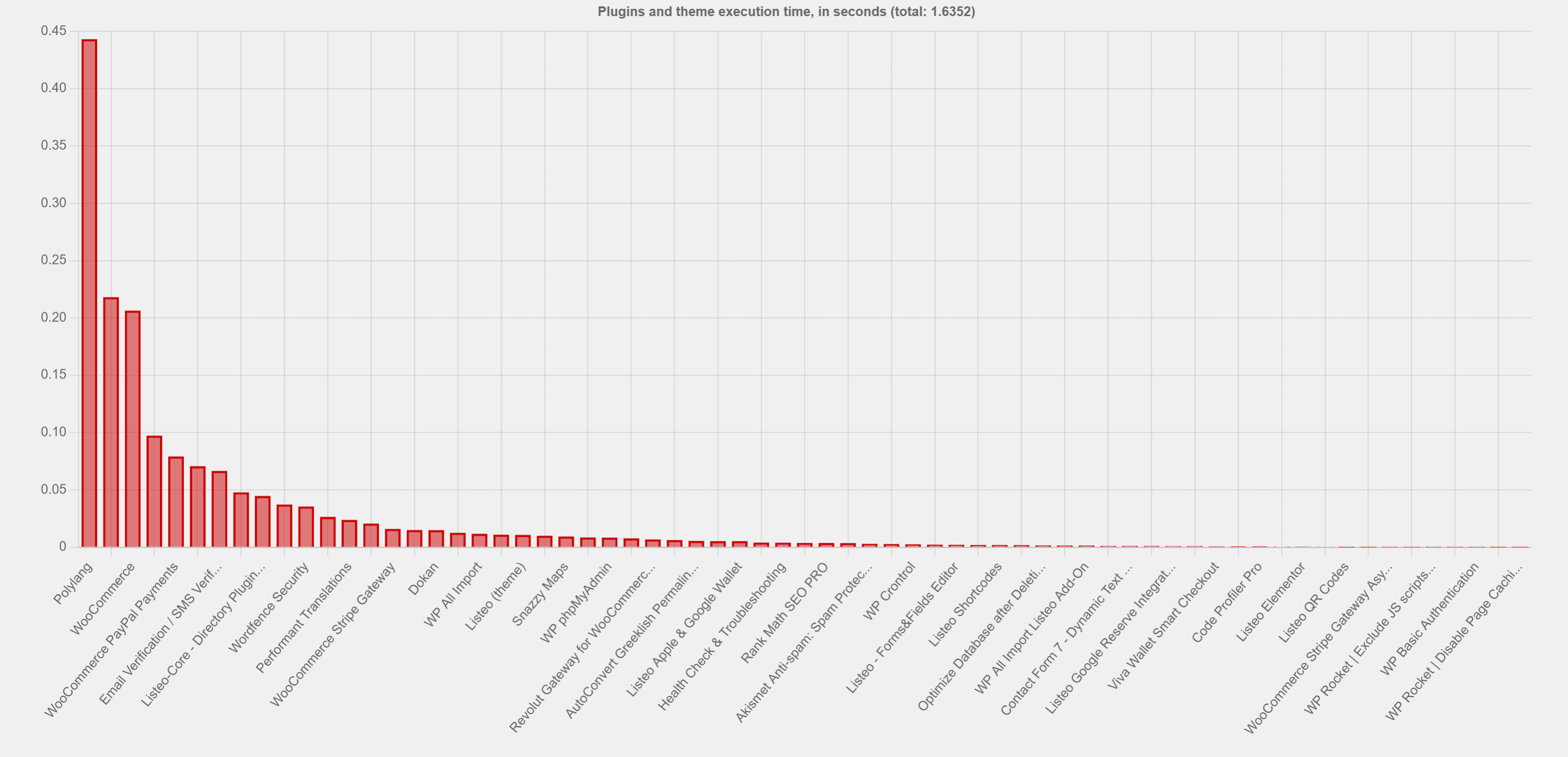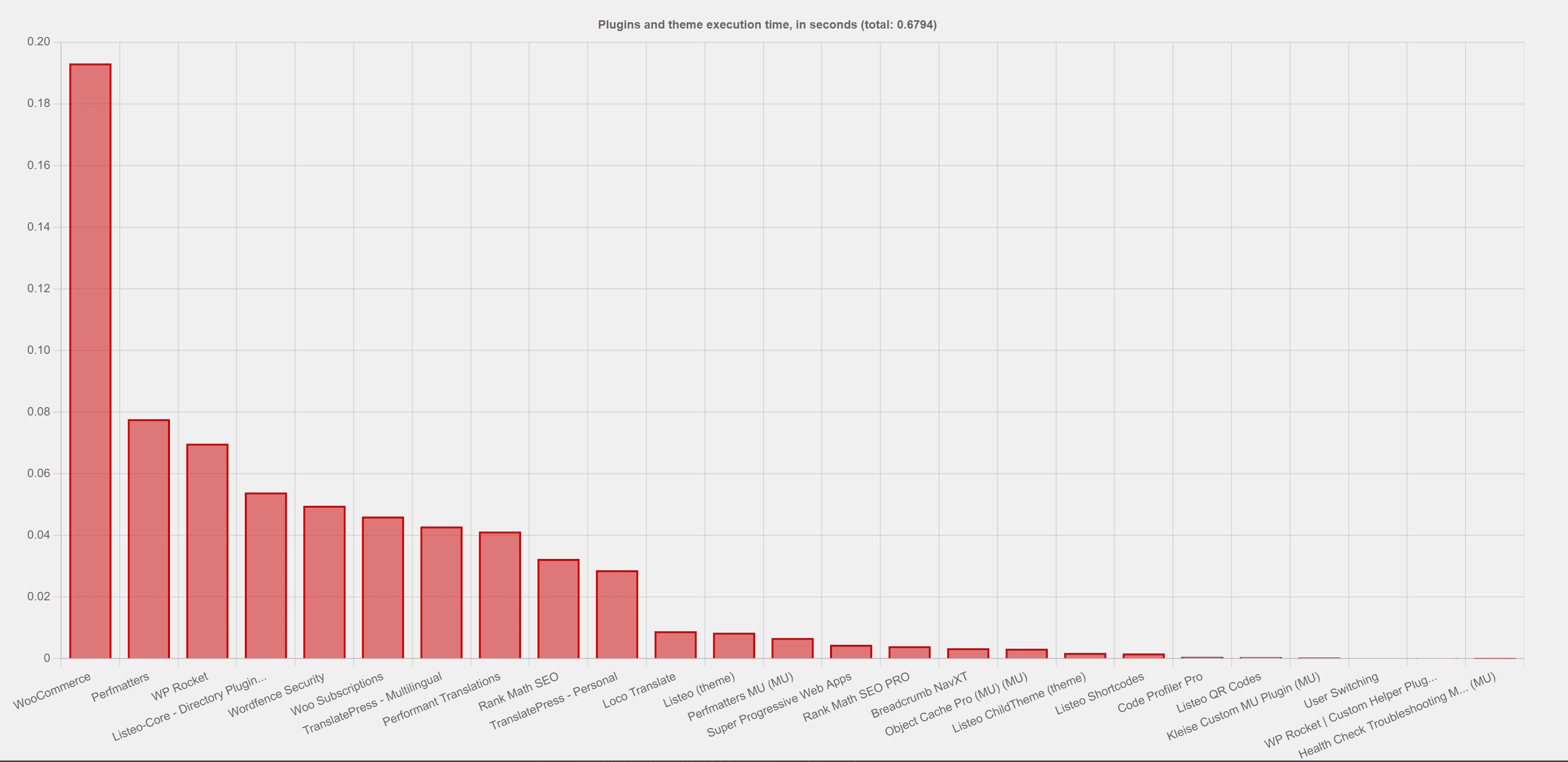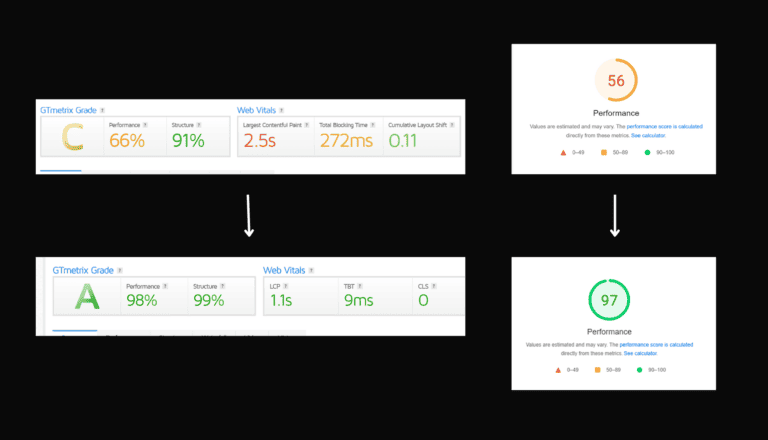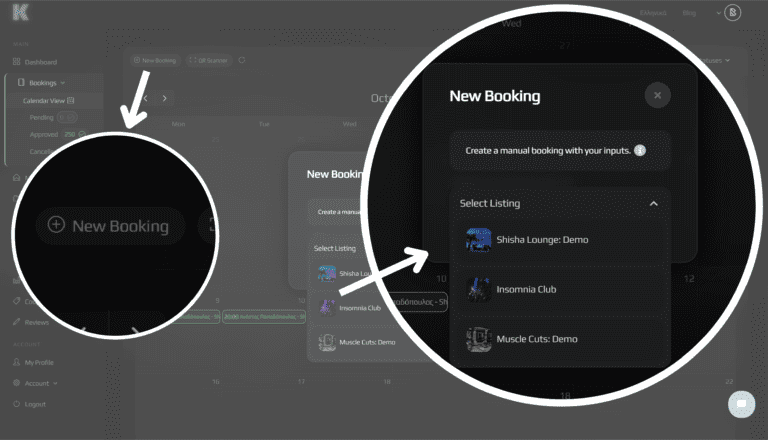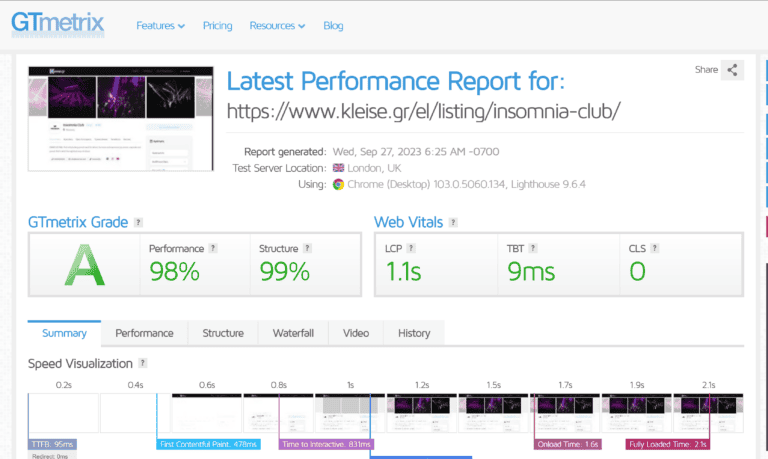+150% Sever-side Speed
Optimizing Server-Side Site Speed for Instant Page Generation
Leveraging four years of Listeo expertise, we excel in server-side speed optimization that transcends typical caching. Our strategies reduce TTFB and enhance server response, directly boosting your site’s performance. We refine WordPress-server interactions for a responsive, rapid-loading Listeo experience.

Why Does Page Speed Matter?
Mastering Server-Side Speed
In the area of WordPress performance, server-side speed optimization is an area often overshadowed by the appeal of frontend tweaks. Yet, it’s a critical component that demands attention. Unlike the frontend, where one-click solutions can offer visible speed improvements, the backend—where your site’s dynamic content is processed and generated—lacks such simplicity. This is the realm of Time to First Byte (TTFB), the crucial span from request to initial server response.WordPress, with its plug-and-play nature, often falls short in server-side efficiency primarily because it executes PHP code globally across pages—whether it’s needed or not. This broad-brush approach can lead to unnecessary strain on server resources, as irrelevant code consumes processing power that could be better allocated elsewhere. It’s a structural oversight that underscores the importance of bespoke optimization strategies to ensure that only the essential code runs for each specific page, thus conserving resources and improving server-side response times.
Why Backend Performance is Paramount
Backend performance is a critical yet often overlooked component of your website’s overall speed. The server’s task of interpreting, executing, and delivering WordPress PHP scripts as HTML to the user’s browser can significantly influence your site’s responsiveness. This process determines whether your site loads in a flash or falls behind, testing the user’s patience. A lagging backend not only slows down the frontend, but it also puts excessive strain on server resources. This is particularly problematic on less capable servers, where high traffic can lead to site outages. Beyond the immediate impact on speed, a sluggish backend undermines the stability and reliability of your Listeo platform, which are essential for a positive user experience and customer retention. In essence, backend optimization is not merely a matter of speed—it’s a fundamental aspect of your site’s performance that ensures it remains responsive, stable, and efficient under any load.
Optimizing Backend: Beyond Listeo Theme and Core Plugin
While the Listeo theme and core plugin excel in code efficiency, the same can’t be said for the general backend speed of many Listeo sites. Our extensive benchmarking indicates that the Listeo components themselves process quickly. Thus the cause of the trend is mostly the accumulation of heavy, non-essential plugins that drag down the backend performance.
Our optimization work does not follow a basic-to-advanced trajectory due to the complexity and experience required at each step. Most backend enhancements necessitate an expert touch—even those that seem straightforward. While there are plugins promising backend optimization through database cleanups or feature trimming, their impact is minimal. True backend optimization is not about tweaking—it’s about transforming. We delve into the server and codebase, applying significant and skillful changes that go far beyond what any out-of-the-box plugin can achieve.
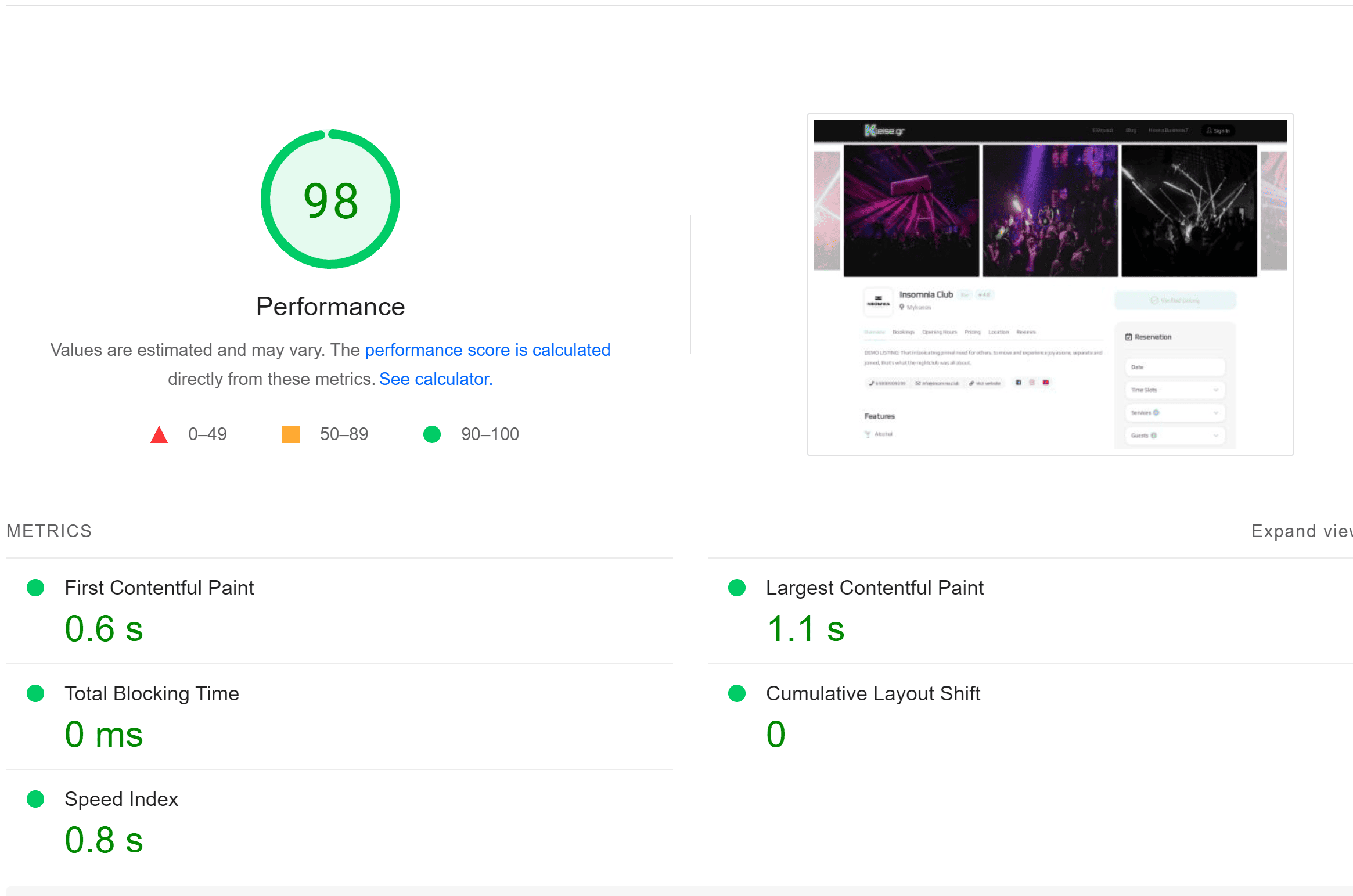

Backend Speed Improvement Strategy
Before digging into our specialized optimization techniques, it’s important to recognize that experienced WordPress users might already be familiar with basic speed optimization strategies. If you fall into this category, you might find the initial steps of our approach familiar. However, for those new to WordPress or who haven’t explored backend optimization in depth, these initial steps are vital.
Our aim is to move beyond generic advice that’s readily available online. Each optimization step we undertake is sequential and builds upon the last. Unlike a guide divided into distinct parts, our approach is a continuous journey, where each phase seamlessly leads to the next. We start with the basics, ensuring your site is on a solid footing, and then progressively introduce more sophisticated techniques. This step-by-step progression is crucial for achieving the ultimate goal: a highly optimized, fast, and fully functional Listeo site.
Invest in a Fast Server
A fast server is a critical first step in enhancing the backend speed of your WordPress site, especially when using resource-intensive themes and plugins like Listeo. Here's an overview of why a fast server matters and how to choose the right one:
The Foundation of Speed: A Robust Server
- Performance Correlation: The server is the foundation of your website's backend performance. A powerful server can handle more data, manage more concurrent users, and process PHP scripts faster, leading to a significant reduction in TTFB and overall page load times.
- PHP Version: Running your site on the latest PHP version, ideally 8.0 or higher, is crucial. Each new release of PHP is typically more efficient and faster than its predecessor, so updating can yield an immediate speed boost.
Server Types and Configuration:
- Server Selection: Whether you choose Apache, Nginx, or LiteSpeed, the key is in the configuration. These servers can be tuned to maximize performance, with LiteSpeed often being acclaimed for its ability to handle concurrent connections efficiently.
- Tech Stack: The right tech stack, including server software, database management, and caching mechanisms, can dramatically improve backend speed. For WordPress, stacks optimized for the CMS, and enhancements like Varnish or Redis can definitely help achieve streamline performance.
Hosting Plan Considerations:
- Cost vs. Performance: While high-end servers offer the best performance, they are not always necessary. A mid-range hosting plan can often provide the optimal balance between cost and performance for many Listeo sites.
- Avoiding Underpowered Hosting: Budget hosting plans less than 30-40$/month may not provide the necessary resources for a smooth Listeo experience, leading to poor backend performance and a slow TTFB.
- More Isn't Always Better: While we can set up complex server configurations for high-traffic Listeo sites, such as those with load balancers on AWS or GCP, this is usually over-kill for the vast majority of Listeo sites.
- Managed Hosting Benefits: Providers like Cloudways, Kinsta, Hostinger, or WP Engine etc offer managed VPS solutions that are optimized for WordPress, eliminating much of the maintenance and performance tuning required by unmanaged servers.
Thanks to our in-depth speed optimization and streamlined coding practices, a single VPS is usually all you need. These solutions offer a balanced mix of performance, efficiency, and ease of use, minimizing the need for constant upkeep. We personally host all our sites on Cloudways, capitalizing on their specialized tech stacks optimized for WordPress, the convenience of managed hosting, and the high-performance capabilities of Vultr High Frequency servers.
In summary, investing in a fast and well-configured server is an excellent initial step in backend optimization, yet it's only part of the equation for achieving optimal performance with Listeo. While we recommend this as a starting point, we understand that switching servers isn't always an option. That's where our expertise comes in: we work with your existing server setup, applying a suite of optimization techniques to significantly boost performance. Our approach ensures that even if your server isn't top-of-the-line, your Listeo site will still operate with remarkable speed and efficiency, providing an exceptional user experience.
Configure a Caching Plugin
The Power of Page Caching: Caching plugins serve as the cornerstone for accelerating WordPress site performance, with page caching playing a pivotal role. This process drastically reduces load times, particularly for non-logged-in visitors, by creating and storing static HTML versions of your site's pages. When these visitors access your site, they are met with these pre-rendered, lightweight HTML pages, bypassing the need for dynamically generating the page using WordPress PHP scripts and database queries each time. The result? A swift, efficient browsing experience that keeps users engaged and reduces server load.
User Cache: Traditional caching mechanisms focus on storing static HTML versions of pages for non-logged-in users, as WordPress sites are dynamic by nature when a user is logged in, with content often needing to be updated in real-time. This is where the concept of user cache comes into play. Premium caching plugins like WP Rocket offer a user cache feature that saves a static HTML version of each dynamically generated page for individual logged-in users. This feature is especially useful for pages that don't require frequent updates, allowing for a seamless and speedy experience without sacrificing the dynamic interaction that Listeo sites provide. So it can be enabled for most Listeo pages, apart from the dynamic Dashboard and Woocommerce Pages.
Cache Preload: For a dynamic platform like Listeo, which may feature thousands of listings, traditional caching plugins that only save a page to cache after a first visit and perform periodic cache clearing every 4-12 hours present a challenge. This often leads to a situation where new user visits, including those from crucial search engine crawlers like Googlebot, land on pages that aren't cached, causing slower load times and potentially impacting SEO due to TTFB (Time to First Byte, or server response time) being a significant ranking factor. The larger the site, even worse for a multilingual setup with multiplied listing pages, the more pronounced the issue becomes—almost 90% of new visits hitting uncached pages. The solution to ensuring a consistently fast page delivery lies in cache preload, a must-be feature for your page caching strategy. With cache preload, immediately after the cache is cleared—whether manually or on an automated schedule—the system proactively regenerates the cache for all the site's pages. This means that almost all visits, whether from new users or search engine bots, are met with pre-cached, swift-loading pages. WP Rocket, our recommended cache plugin, excels in this area with its advanced preload capabilities, ensuring that your Listeo site's performance remains optimal, your user experience seamless, and your SEO standing strong.
Challenges with Dynamic Content: Caching within the dynamic nature of a Listeo site presents unique challenges. Key areas like user dashboards, where information such as new bookings, updated statistics, and listing modifications must be the latest, present a challenge to standard caching practices. To balance the need for speed with the demand for up-to-date information, a thoughtful caching strategy is vital. To ensure users always receive the most recent information, we strategically configure cache settings to exclude certain dynamic pages from being cached.
WP Rocket x Listeo plugin: The golden solution: All cache plugins have the option to exclude certain pages from caching. But this also, removes all other frontend speed optimizations the cache offers to these pages. The solution? Our tailored WP Rocket x Listeo plugin which is designed to optimize Listeo's dashboard pages by ensuring that while the HTML is not cached, other performance optimizations are still applied. With this plugin, dashboard pages benefit from frontend performance boosts such as JS/CSS minification, the crucial Defer & Delay JS feature, even for uncached pages.
In summary, the caching plugin configuration for Listeo sites increases TTFB to lightning-fast by reducing reliance on real-time page generation. Through strategic page caching, we effectively decrease the frequency of generating pages from server, ensuring that most visitors are served with pre-generated, cached pages but without compromising functionality. This strategy significantly lessens the server's workload, leading to a more responsive experience. However, the focus of this portfolio is to enhance backend speed directly. We don't just aim to avoid real-time generation; we strive to make it as fast as possible when it occurs. Stay tuned for the methods and tactics we employ to ensure rapid backend performance for your Listeo site.
Leverage Object Cache
What is Object Caching?
Object caching is the process of storing database query results so that the next time the same result is needed, it can be served from the cache without the need to query the database again. Since WordPress relies heavily on database calls, implementing object caching can significantly reduce the load on your database, thereby improving your website's performance, especially for sites with high traffic volumes and extensive database interactions.
Understanding WordPress Object Cache
WordPress includes a built-in object caching system which is designed to store data retrieved from the database in PHP memory to prevent the same data from being queried multiple times during a single page load. However, this built-in cache is non-persistent — meaning it does not survive beyond the scope of a single page load.
The Need for Persistent Object Caching
For optimal performance, especially with complex and high-traffic sites, persistent object caching is essential. Persistent caching allows data to remain in the cache across multiple page loads, which can significantly speed up WordPress by avoiding repetitive database queries.
Redis and Memcached as Persistent Caching Solutions
Two leading tools for persistent object caching are Redis and Memcached. They are in-memory data stores that act as a cache for the MySQL database, reducing the server's workload and improving response times.
While both are effective, Redis is often favored due to its broader feature set, better support, and popularity. It can handle complex data types and offers features like replication, clustering, and transactional support.
Using Redis
For Redis-based object caching, plugins such as the Redis Object Cache plugin are available for free. Before installing, ensure your hosting environment supports Redis with the necessary PHP Redis extension.
If you're using Cloudways, they offer an integrated solution called Object Cache Pro, which provides a more advanced object caching system, including the benefits of Redis, at no additional cost. This plugin is particularly potent, as it comes with serializer and compression options that can reduce Redis memory usage by 70-80% and cut down on network overhead.
Custom Configuration
While installing the plugin can be straightforward, optimizing it to get the full benefits requires some custom configuration. This can involve tweaking the serialization, compression and many more settings to ensure minimal memory usage and efficient data retrieval.
In conclusion, object caching is a powerful technique for WordPress sites to minimize database load and improve page load times, especially for dynamic content. By implementing persistent object caching with Redis and optimizing the configuration, WordPress sites can achieve better performance and scale more effectively as traffic grows.
Optimize Database
Speed Enhancement through Database Optimization:
Τhe MySQL database is inherently quick. However, there's always room for improvement. While there are countless plugins promising automatic optimization, we know that genuine, impactful database enhancement is not that straightforward. True optimization requires a hands-on, detailed approach rather than a one-click solution.
Real Optimization vs. Generic Tips:
You may be familiar with common database optimization tips such as executing 'OPTIMIZE TABLE' commands, deleting old post revisions, spam comments, purging orphaned data, cleaning up trash, and managing transient options. There's a wealth of plugins available to automate these tasks, and it's likely that you have some of these measures already in place. However, these conventional methods typically offer only minor improvements.
wp_options Table and Autoloaded Data:
A key focus area is the wp_options table, specifically the autoloaded data that loads on every page. A bloated wp_options table can significantly slow down a WordPress site. While plugin data should ideally load selectively, the reality is many plugins set their data to autoload. Our investigations across various sites have consistently revealed this as a significant performance bottleneck. The sweet spot for autoloaded data is between 300KB - 1MB. Anything above this, especially reaching 3-5 MB, needs optimization, and beyond 10 MB requires immediate intervention. We've usually managed to reduce autoloaded data by 50-70% in our optimizations, focusing on removing the largest and most unnecessary autoload rows.
wp_postmeta: The Controversial Giant
The wp_postmeta table is notorious for swelling in size, which can lead to slower database queries and a lagging WordPress backend, particularly for sites with extensive content. As each post or listing is added, associated metadata accumulates, often including unnecessary entries that worsen the table's growth. This can dramatically impact site speed and scalability, making it a critical focus area for optimization.
WooCommerce's High-Performance Order Storage
HPOS represents a strategic pivot away from the overloaded wp_postmeta table, introducing a specialized table designed to handle order data more efficiently. HPOS signifies an important step towards optimized data architecture, offering a scalable solution that enhances database performance and overall site operation for WooCommerce-powered sites, including our Listeo sites. We will make sure your plugins are compatible with HPOS or make them, and then enable HPOS.
Cleaning up wp_postmeta
When it comes to optimizing your Listeo site, the wp_postmeta table demands a profound clean-up. Sites with fewer than 500 listings typically operate smoothly; WordPress is robust enough to handle up to 100,000 postmeta rows well. However, the strain on the database intensifies with larger listing numbers. We often see each listing carrying 20-40 postmeta entries – a number that becomes unmanageable with thousands of listings. By refining some parts of the class-listeo-core-submit.php, we ensure that only meaningful data is stored. Many postmeta entries are placeholders containing no actual data ('0' values), especially in imported listings. These can be safely removed without impacting functionality, significantly reducing database load. Image data attached to listings further increases the size of wp_postmeta. Our strategy includes pruning unused image data and ensuring that when a listing is deleted, its associated image data is also removed from the database. Also, we will search and find all other kinds of unnecessary rows that come in bulk and after careful examination, we will safely remove them. Most of our wp_postmeta cleanup works will reduce its size 40-50%.
Purging Redundant Data Across Tables
Our database optimization process includes a thorough purging of redundant data across all tables. By deploying specialized SQL commands, we target and rank the heaviest data rows contributing to bloat, then carefully remove them to enhance storage efficiency and site performance. For instance, even well-regarded plugins such as RankMath, known for their efficient coding, haven't fully optimized their database usage, often overloading the wp_options and wp_postmeta tables. Finally, we clean the leftovers of old plugins. It’s common for plugins to leave behind data even after they’ve been uninstalled, causing database litter.
Effective database optimization for Listeo sites requires an expert touch, far beyond what automated tools can offer. Our specialized approach covers deep cleaning of wp_options, detailed pruning of wp_postmeta, and strategic implementation of custom coding, ensuring your site scales efficiently while maintaining peak performance.
Remove Redundant Plugins
Reform Plugin Usage for Enhanced Performance
In the pursuit of an optimized Listeo site, a critical aspect often overlooked is the thoughtful management of plugins. While plugins add functionalitiies, they can also be a source of inefficiency, leading to unnecessary bloat and sluggish site performance. Our approach focuses on a thorough evaluation of all your plugins, identifying and eliminating redundancies to reorganize your site’s operation.
Eliminating Unnecessary Default Plugins
Firstly, Listeo requires installation and activation of certain plugins, but not all of them are essential. We aim to eliminate or replace these with more efficient alternatives:
Autocomplete WooCommerce Orders: This plugin, designed to mark WooCommerce payments as 'Completed' automatically, can be replaced with a custom function in your
functions.phpfile. This small but significant change eliminates the need for an external plugin that adds slowness to your site.CMB2 and CMB2 Field Slider: Both are mostly included in the Listeo theme code by default. We plan to optimize and directly integrate the rest of the features into the theme, thus removing the need for separate plugins and reducing your site’s load.
Envato Market Plugin: Used for theme updates, this plugin can slow down your site for no good reason. A more efficient method is to manually update the Listeo theme directly from ThemeForest, by downloading and installing it within the WordPress dashboard.
Kirki Customizer Framework: If you're not frequently altering your site's settings or your settings within the "Customize" layout are already set without a plan to change, this plugin is redundant. Removing it can help in reducing the site’s loading time.
Purethemesnet CPT: This plugin contains some code used by themes created by Purethemes developers but is not needed in Listeo. We will remove it.
- WP All Import & WP All Import Listeo Add-on: If you dont plan to import listings from data sheet, or have done your import and won't use the plugin again, or even if you don't plan to import new listings right now, you can remove these plugins, since they are not used at all!
Listeo Editor Plugin: For users not utilizing form editors, we propose removing this plugin and integrating package management into the Listeo Core settings. This step further simplifies the backend and boosts site efficiency.
Our expertise in optimizing Listeo sites involves more than just removing these plugins. It requires a deep understanding of how these plugins function within the Listeo theme and replacing them with custom coding. We advise against trying this on your own due to the complex nature of these modifications, unless you know what you do. Partner with us, and we'll ensure your site is optimized safely and effectively, enhancing performance while maintaining essential functionalities.
Benchmarking and Further Plugin Removal
Our optimization process for your Listeo site continues with thorough benchmarking using Code Profiler Pro plugin. This tool enables us to analyze the backend speed of each page, providing detailed insights into the load time and performance impact of each plugin, file, function, etc. This initial assessment is crucial as it informs our decisions on which plugins to keep, modify, or remove. In this way, we will work on these slow and non-essential plugins, integrating their functionalities into the theme's functions.php file, or replacing them with customized, more efficient alternatives. This approach ensures that every plugin on your site adds real value, without compromising performance.
Unload Plugins per Page
The Importance of Advanced Plugin Management
In the realm of WordPress speed optimization, the technique of unloading plugins per page stands out as a highly effective yet completely underutilized strategy. This advanced method is not discussed online, making it a specialized skill that requires a serious expert, particularly for those using the Listeo theme.
Utilizing Perfmatters for Targeted Plugin Control
For this intricate task, we rely on our favorite plugin, Perfmatters. Similar to our frontend optimization strategy where we used Perfmatters to disable JavaScript and CSS per page, it also offers the capability to disable entire plugins from loading on specific pages. This might seem unusual at first, but it’s a feasible and incredibly powerful technique. Unloading plugins from the front-end pages of your site doesn’t affect your WordPress admin dashboard, preserving full functionality while optimizing the user-facing side of your site.
Conditional Unloading of Plugins
Before we proceed with unloading any plugin, a comprehensive benchmark test on various pages of your site is conducted using Code Profiler Pro. As we discussed in the previous "Remove Redudant Plugins" technique, this tool provides detailed insights into each plugin’s impact on backend speed, load time, and overall performance, guiding our decisions on which plugins to conditionally unload. Some plugins are not used site-wide but only on specific pages. In such cases, completely disabling them isn't feasible. Here, we employ conditional unloading, allowing these plugins to run only on pages where necessary. This approach takes plugin optimization to new heights.
As you can see on the benchmark, on a random page (Bookings dashboard page) there are several plugins that are either completely unneeded and add slowness to the site, and can be replaced with a little code in functions.php, and other plugins that are not needed on all pages. These plugins are conditionally loaded only on the specific pages they are needed.
Case Study: Optimizing Payment Plugins
Consider payment plugins for WooCommerce, like PayPal or Stripe. While essential for checkout, cart, and woocommerce my-account dashboard pages, they are unnecessary elsewhere. For instance, having several payment method plugins can add severe unwanted load to your site's other pages. Using Perfmatters' script manager and MU-mode, we can conditionally unload these plugins, reducing unnecessary bloat.
The Complexity and Necessity of Expert Handling
This technique involves multiple combinations of conditional unloading across different plugins and pages, making it one of the most complex and labor-intensive tasks. It requires an expert who has sufficient WordPress and Listeo experience and can safely determine where plugins can be unloaded without issues. Incorrect unloading can lead to problems ranging from minor functionality absence issues to Fatal errors. As you can see on the benchmark below, the same page (Bookings dashboard page) with all the speed optimizations discussed on this portfolio is way faster. These specifc times are not completely realistic and are higher than the real TTFB, since the benchmark plugin takes much more time to benchmark all functions, files, and plugins on a single page load. After thorough tests on real browsers, we can safely say that the average page time went from around 800ms to 300ms. Which is an exceptional speed increase.
Special Focus on WooCommerce within Listeo Sites
A notable example is WooCommerce, often one of the slowest plugins on Listeo sites. With specific customizations, like removing the cart from the header, we can unload WooCommerce from most Listeo pages. This tailored approach, based on extensive testing and experience, ensures efficient performance without compromising crucial functionalities.
Our thorough, expert-led process ensures that every step of unloading plugins per page is conducted with precision and care. We strongly advise against attempting this yourself, if you don't have deep experience in WordPress speed optimization and know exactly what you are doing. Our approach guarantees a significant enhancement in your site’s performance, achieved through detailed planning, testing, and execution.
Enhance Translations
The Crucial Role of Translations in Site Speed
Enhancing translations is vital for the speed optimization of WordPress sites, especially when dealing with multilingual sites. This aspect of site optimization is often neglected, but it plays a significant role in determining the overall performance of a website.
Evaluating Multilingual Plugins
Popular multilingual plugins like WPML, Polylang, TranslatePress, Weglot, GTranslate, and MultilingualPress while providing multilingual capabilities for your site, are all terrible performance-wise. Of course, they don't add the same slowness to your site, some of them are way slower, due to extreme complexity and features they offer, like WPML, and some are faster due to their simple straightforward nature, like Polylang. Still, Polylang is almost as slow as the huge Woocommerce plugin on our benchmarks. We won't even discuss WPML...
Customizing TranslatePress for Enhanced Speed
TranslatePress, a widely-used multilingual plugin, stands out for its unique approach, utilizing separate database tables and a front-end translation interface. Despite these advantages, TranslatePress can still be a drag on site speed, especially for heavily translated sites. A client wanted us to make TranslatePress as fast as possible. We aim to retain its multilingual features but shift the translation mechanism. By disabling the gettext translations within TranslatePress and adopting the standard WordPress internationalization and localization system, we can leverage .po and .mo files for translations, without relying on the heavy translation engine of the plugin, which is not optimized for speed. This change dramatically improves performance, with translations being managed more efficiently through Loco Translate.
From TranslatePress being by far the slowest plugin, like all default multilingual plugins, to TranslatePress being blazing fast, after our optimized version:
The Challenge with .po/.mo Translations
The standard translation system in WordPress, utilizing .po (Portable Object) and .mo (Machine Object) files, is a well-established method for managing site localizations and is used by all WordPress sites. However, it's not without its drawbacks. Recent research in the WordPress community have highlighted a significant issue. "Initial benchmarks showed that the median loading time for a localized site can be up to 50% slower than for non-localized sites, depending on which themes and plugins are being used." This slowdown is due to the nature of how these files are loaded and parsed for each request, which can be quite resource-intensive, especially when multiple plugins and themes each have their own translation files.
Revolutionizing Translation Efficiency
To combat this performance hit, the WordPress research team developed the Performant Translations plugin. This innovative solution reimagines the handling of translation files in WordPress. By replacing traditional MO files with PHP files, the plugin significantly speeds up the parsing process. PHP files are not only faster to parse but also benefit from being stored in the OPcache, providing an additional performance boost. This enhancement is particularly beneficial for non-English and multilingual sites, as the plugin can deliver immediate speed improvements immediately.
Optimizing Multilingual Sites
For multilingual sites, the Performant Translations plugin offers a cooperative solution when combined with Loco Translate and our customized version of TranslatePress. Loco Translate facilitates efficient translation management, while our customized TranslatePress ensures that multilingual features do not add unnecessary overhead. This approach allows us to leverage the benefits of PHP-based translations, bypassing the performance issues associated with default .mo translation rendering. For sites using other multilingual plugins, we can migrate their translations into Loco Translate and integrate them with our optimized TranslatePress version, ensuring seamless language support without compromising on speed.
In optimizing WordPress sites for speed and efficiency, especially those with multilingual content, we employ a targeted approach that revolutionizes traditional translation methods. By customizing TranslatePress in conjunction with Loco Translate and integrating the innovative Performant Translations plugin, which replaces slower .po/.mo files with faster PHP files, we significantly reduce the performance drag typically associated with multilingual plugins.
We answer your most asked Questions.
How do you ensure it's safe to unload certain plugins on specific pages?
Our process for safely unloading plugins on specific pages involves a comprehensive analysis of each plugin's role and impact on your Listeo site. We methodically assess the functionality and dependencies of each plugin to identify where they are crucial and where they can be unloaded without affecting site functionality. This level of detailed analysis requires expert handling. It's a complex task that should not be attempted without deep understanding and experience. Having worked with numerous Listeo sites, we know the complexities of widely used plugins and can easily understand all your plugins functionalities and their roles across different pages in order to make informed decisions.
What level of speed optimization can I expect within my budget?
We recognize that each Listeo site is unique, with specific needs and constraints. Our approach is tailored, considering your site's distinct specifications, functionalities, and plugins. We start with comprehensive benchmarking to pinpoint performance bottlenecks of each plugin. The level of optimization achievable is directly influenced by your budget. For tighter budgets, we focus on implementing the most impactful optimizations first. If your budget allows for more extensive work, we delve deeper, conducting thorough, in-depth refinements that we discussed above. Regardless of budget size, our goal remains the same: to deliver the highest possible improvement in site speed and efficiency.
How do you balance website functionality with the need to optimize speed?
In our approach to optimizing backend speed for Listeo sites, there isn't a balance, meaning that we don't compromise between functionality and speed; rather, they coexist without sacrificing one for the other. Your site's functionalities are an immutable aspect that we preserve at all costs. Within these set boundaries, we focus on backend optimizations. This isn't about balancing two opposing forces; it's about enhancing one aspect – speed – while steadfastly maintaining the integrity of the other – functionality. Every step of our optimization process is carefully measured to ensure it fits within your budget, yet the core functionalities of your site remain untouched. We methodically enhance speed, layer by layer, always upholding the full range of features and capabilities of your site.
What is the most important optimization step you've discussed?
Identifying the single most important step in backend optimization for Listeo sites is similar to choosing the foundation over the roof in house-building; both are essential. A fast server and effective caching form the base, ensuring quick load times for all users. The advanced step of conditionally conditionally unloading plugins, while more complex, is like adding the final, crucial touches to optimize performance. It's a significant but complex task requiring expert handling. Our approach is to build upon the basics, like robust hosting and caching, and then progress to these advanced tactics based on your needs and budget. This ensures a comprehensive and balanced optimization journey, enhancing your site's efficiency and user experience from the ground up.
Want this for your own Listeo site?
Fill out the form below and let’s discuss how we can tailor this feature to meet your specific needs. Take your Listeo site to the next level!
Amplify your Listeo site further
Discover related portfolio works that can further elevate the Listeo platform user experience.

